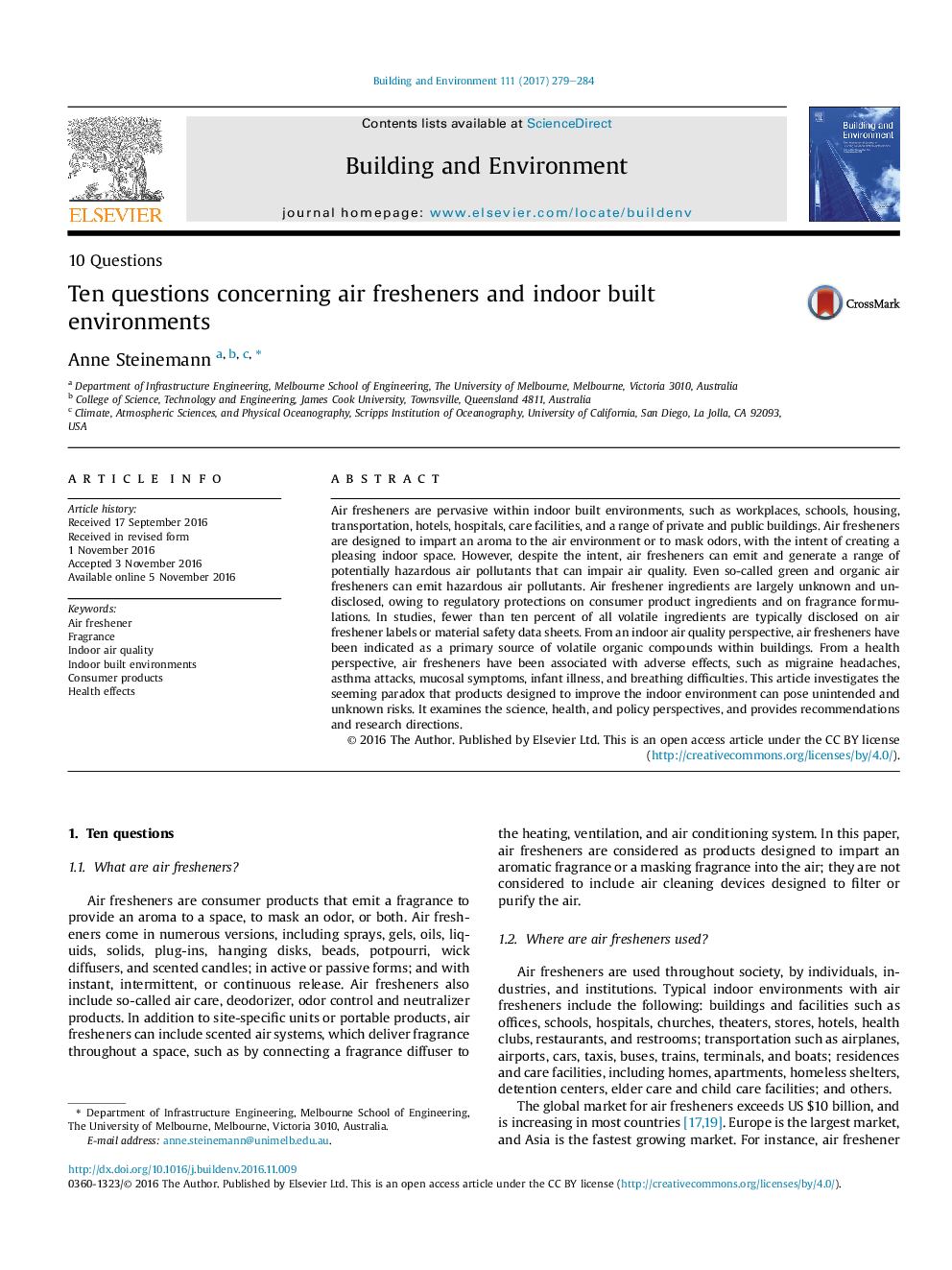| کد مقاله | کد نشریه | سال انتشار | مقاله انگلیسی | نسخه تمام متن |
|---|---|---|---|---|
| 4917501 | 1428381 | 2017 | 6 صفحه PDF | دانلود رایگان |
- Air fresheners are used throughout society.
- Air fresheners, even ones called green and organic, can emit potentially hazardous chemicals.
- Fewer than 10% of air freshener ingredients are typically disclosed to the public.
- Over 20% of the general US population report adverse health effects from air fresheners.
- Fragrance-free indoor environments receive a majority of support.
Air fresheners are pervasive within indoor built environments, such as workplaces, schools, housing, transportation, hotels, hospitals, care facilities, and a range of private and public buildings. Air fresheners are designed to impart an aroma to the air environment or to mask odors, with the intent of creating a pleasing indoor space. However, despite the intent, air fresheners can emit and generate a range of potentially hazardous air pollutants that can impair air quality. Even so-called green and organic air fresheners can emit hazardous air pollutants. Air freshener ingredients are largely unknown and undisclosed, owing to regulatory protections on consumer product ingredients and on fragrance formulations. In studies, fewer than ten percent of all volatile ingredients are typically disclosed on air freshener labels or material safety data sheets. From an indoor air quality perspective, air fresheners have been indicated as a primary source of volatile organic compounds within buildings. From a health perspective, air fresheners have been associated with adverse effects, such as migraine headaches, asthma attacks, mucosal symptoms, infant illness, and breathing difficulties. This article investigates the seeming paradox that products designed to improve the indoor environment can pose unintended and unknown risks. It examines the science, health, and policy perspectives, and provides recommendations and research directions.
Journal: Building and Environment - Volume 111, January 2017, Pages 279-284
